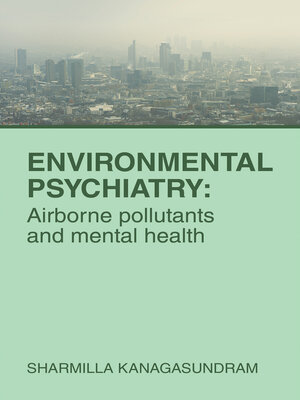
Sign up to save your library
With an OverDrive account, you can save your favorite libraries for at-a-glance information about availability. Find out more about OverDrive accounts.
Find this title in Libby, the library reading app by OverDrive.



Search for a digital library with this title
Title found at these libraries:
| Library Name | Distance |
|---|---|
| Loading... |
This book is composed of two separate reviews: The first review merges the extended evidence on the effects of air pollutants on mental health. The second review is based on interventions to decrease air pollution. Six common pollutants were identified. The common airborne pollutants are particulate matter (Pm), nitrogen dioxide (NO2), sulphur dioxide(SO2), carbon monoxide (CO), ozone (O3), and volatile organic compounds (VOCs). Particulate matter has been identified as a common air pollutant that increases the risk of mental illness. The most common air pollutant found to increase the risk of depression and anxiety was Pm 2.5. The exposure concentration levels of Pm 2.5 which were reported to increase the risk of depression ranged from 9.8 g/m3 to 74.3 g/m3, with a median of 26.6 g/m3 and the exposure concentration levels reported to increase the risk of anxiety ranged from 11.1 g/m3 to 24.8 g/m3, with a median of 16.5 g/m3. Air pollutants are not the sole factor responsible for mental illness. however, when taken together with other risk factors such as genetics, lifestyle, socioeconomic status, and access to mental healthcare, air pollutants can be regarded as a significant contributing factor to mental illness.







